Effects of Different Temperatures on the Softening of Red-Bed Sandstone in Turbulent Flow
Abstract
:1. Introduction
2. Materials and Methods
2.1. Experimental Method
2.2. Development of Test Equipment
2.3. Test Contents and Process
3. Results
3.1. Chemical Laws of the Effects of Different Temperatures in Turbulent Flow
PH Value of the Circulating Aqueous Solution
3.2. Physical Laws of the Effects of Different Temperatures in Turbulent Flow
3.2.1. Variation in the Moisture Content
3.2.2. Contrast Analysis of the Visible Rock Fractures
3.2.3. Qualitative Analysis of the Microscopic Rock Phenomena
3.2.4. Rock Sample Porosity Calculation
3.3. Mechanical Laws of the Effects of the Different Temperatures in Turbulent Flow
3.3.1. Uniaxial Compressive Strength Test
3.3.2. Test Result Analysis
4. Influence Mechanism
5. Conclusions
Author Contributions
Funding
Acknowledgments
Conflicts of Interest
References
- Miščević, P.; Vlastelica, G. Estimation of embankment settlement caused by deterioration of soft rock grains. Bull. Eng. Geol. Environ. 2019, 78, 1843–1853. [Google Scholar] [CrossRef]
- Vlastelica, G.; Miščević, P.; Pavić, N. Testing the shear strength of soft rock at different stages of laboratory simulated weathering. Građevinar 2016, 68, 955–966. [Google Scholar]
- Liu, Z.; He, X.; Fan, J.; Zhou, C. Study on the Softening Mechanism and Control of Red-Bed Soft Rock under Seawater Conditions. J. Mar. Sci. Eng. 2019, 7, 235. [Google Scholar] [CrossRef]
- Liu, Z.; He, X.F.; Zhou, C.Y. Influence Mechanism of Different Flow Patterns on the Softening of Red-Bed Soft Rock. J. Mar. Sci. Eng. 2019, 7, 155. [Google Scholar] [CrossRef]
- Voake, T.; Nermoen, A.; Korsnes, R.; Fabricius, I.L. Temperature cycling and its effect on mechanical behaviours of high-porosity chalks. J. Rock Mech. Geotech. Eng. 2018, 11, 749–759. [Google Scholar] [CrossRef]
- Veillard, C.M.; John, C.M.; Krevor, S.; Najorka, J. Rock-buffered recrystallization of Marion Plateau dolomites at low temperature evidenced by clumped isotope thermometry and X-ray diffraction analysis. Geochim. Cosmochim. Acta 2019, 252, 190–212. [Google Scholar] [CrossRef]
- Romero-Mujalli, G.; Hartmann, J.; Börker, J. Ecosystem controlled soil-rock pCO2 and carbonate weathering–Constraints by temperature and soil water content. Chem. Geol. 2018. [Google Scholar] [CrossRef]
- Wang, B.; Guo, X.; Li, F. Mechanical behavior of rock bolts under a high temperature environment. Int. J. Rock Mech. Min. Sci. 2018, 104, 126–130. [Google Scholar] [CrossRef]
- Su, G.S.; Chen, Z.Y.; Ju, J.W. Influence of temperature on the strainburst characteristics of granite under true triaxial loading conditions. Eng. Geol. 2017, 222, 38–52. [Google Scholar] [CrossRef]
- Guo, X.; Zou, G.; Wang, Y. Investigation of the temperature effect on rock permeability sensitivity. J. Pet. Sci. Eng. 2017, 156, 616–622. [Google Scholar] [CrossRef]
- Sun, Y.Z.; Xie, L.Z.; He, B. Effects of effective stress and temperature on permeability of sandstone from CO2-plume geothermal reservoir. J. Rock Mech. Geotech. Eng. 2016, 8, 819–827. [Google Scholar] [CrossRef]
- Tang, Y.; Xu, G.; Lian, J. Effect of temperature and humidity on the adhesion strength and damage mechanism of shotcrete-surrounded rock. Constr. Build. Mater. 2016, 124, 1109–1119. [Google Scholar] [CrossRef]
- Mehrgini, B.; Memarian, H.; Dusseault, M.B. Geomechanical characterization of a south Iran carbonate reservoir rock at ambient and reservoir temperatures. J. Nat. Gas Sci. Eng. 2016, 34, 269–279. [Google Scholar] [CrossRef]
- Zhang, W.; Sun, Q.; Hao, S. Experimental study on the variation of physical and mechanical properties of rock after high temperature treatment. Appl. Therm. Eng. 2016, 98, 1297–1304. [Google Scholar] [CrossRef]
- Li, W.J.; Zhu, C.; Yang, C.H. Experimental and DEM investigations of temperature effect on pure and interbedded rock salt. J. Nat. Gas Sci. Eng. 2018, 56, 29–41. [Google Scholar] [CrossRef]
- Minde, M.W.; Wang, W.X.; Madland, M.V. Temperature effects on rock engineering properties and rock-fluid chemistry in opal-CT-bearing chalk. J. Pet. Sci. Eng. 2018, 169, 454–470. [Google Scholar] [CrossRef]
- Motra, H.B.; Mager, J.; Ismail, A. Determining the influence of pressure and temperature on the elastic constants of anisotropic rock samples using ultrasonic wave techniques. J. Appl. Geophys. 2018, 159, 715–730. [Google Scholar] [CrossRef]
- Zhang, Z.X. Chapter 5—Effect of Temperature. In Rock Fracture and Blasting; Elsevier Inc.: Amsterdam, The Netherlands, 2016; pp. 111–133. [Google Scholar]
- Hemme, C.; van Berk, W. Change in cap rock porosity triggered by pressure and temperature dependent CO2–water-rock interactions in CO2 storage systems. Petroleum 2017, 3, 96–108. [Google Scholar] [CrossRef]
- Yavuz, H.; Demirdag, S.; Caran, S. Thermal effect on the physical properties of carbonate rocks. Int. J. Rock Mech. Min. Sci. 2010, 47, 94–103. [Google Scholar] [CrossRef]
- Liu, D.W.; Xiong, C.R. Experimental study on progressive disintegration characteristics of red sandstone. Chin. Foreign Highw. 2002, 6, 19–22. [Google Scholar]
- Ministry of Water Resources. Specifications for Rock Tests in Water Conservancy and Hydroelectric Engineering (SL264-2001); China WaterPower Press: Beijing, China, 2001.
- Song, L. Study on the Microcosmic Mechanism of Softening Red Rock with Water; Southwest Jiaotong University: Chengdu, China, 2014. [Google Scholar]
- Zhou, C.Y.; Deng, Y.M.; Tan, X.S.; Lin, C.X.; Wen, S.R. Study on the variation of chemical composition of water solution in soft rock during saturated process. J. Rock Mech. Eng. 2004, 22, 3813–3817. [Google Scholar]
- Marco, M.; Francesco, S.; Leonardo, P.; Andrea, C.; Jo, D.W. A hybrid model to evaluate subsurface chemical weathering and fracture karstification in quartz sandstone. J. Hydrol. 2019, 572, 745–760. [Google Scholar]
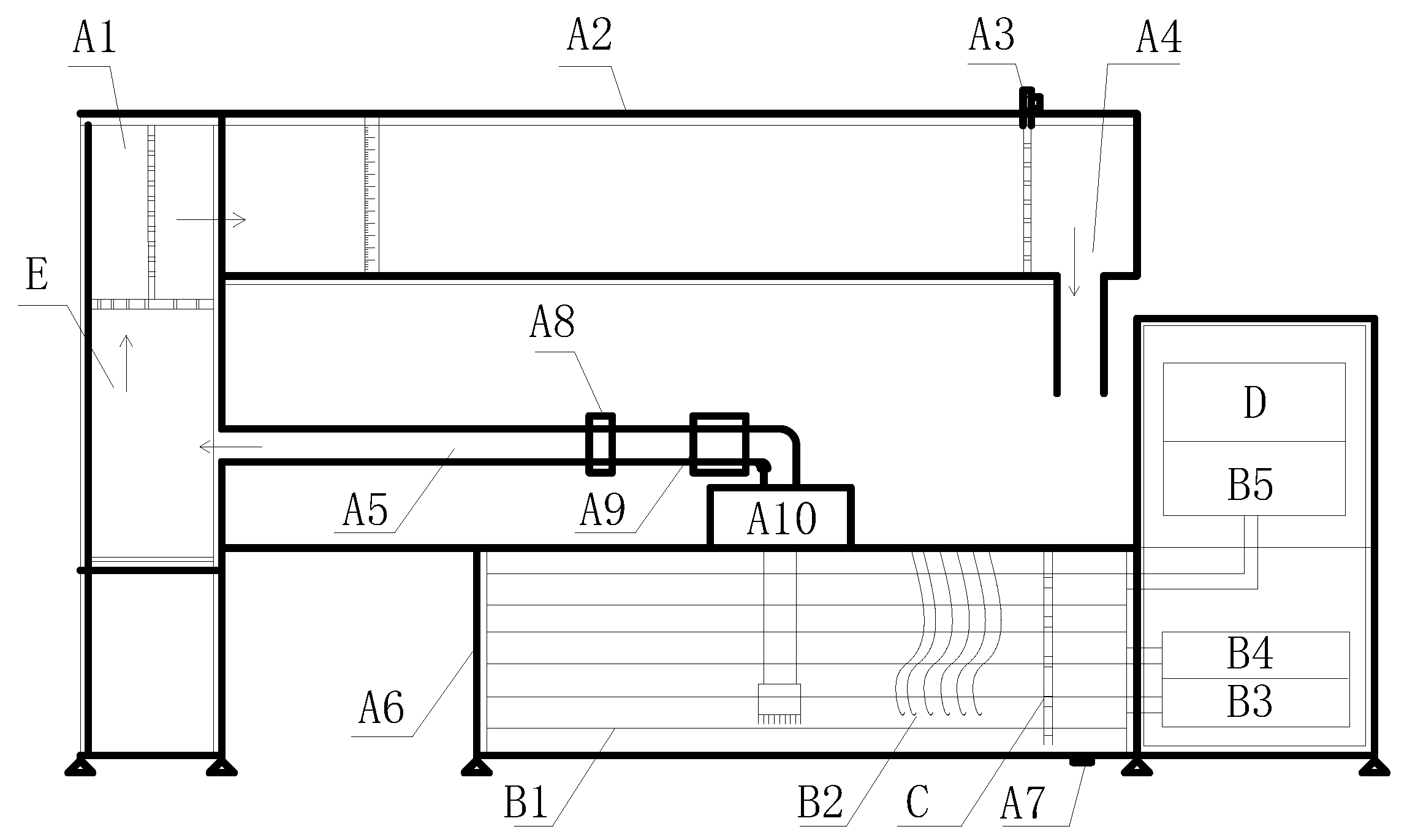

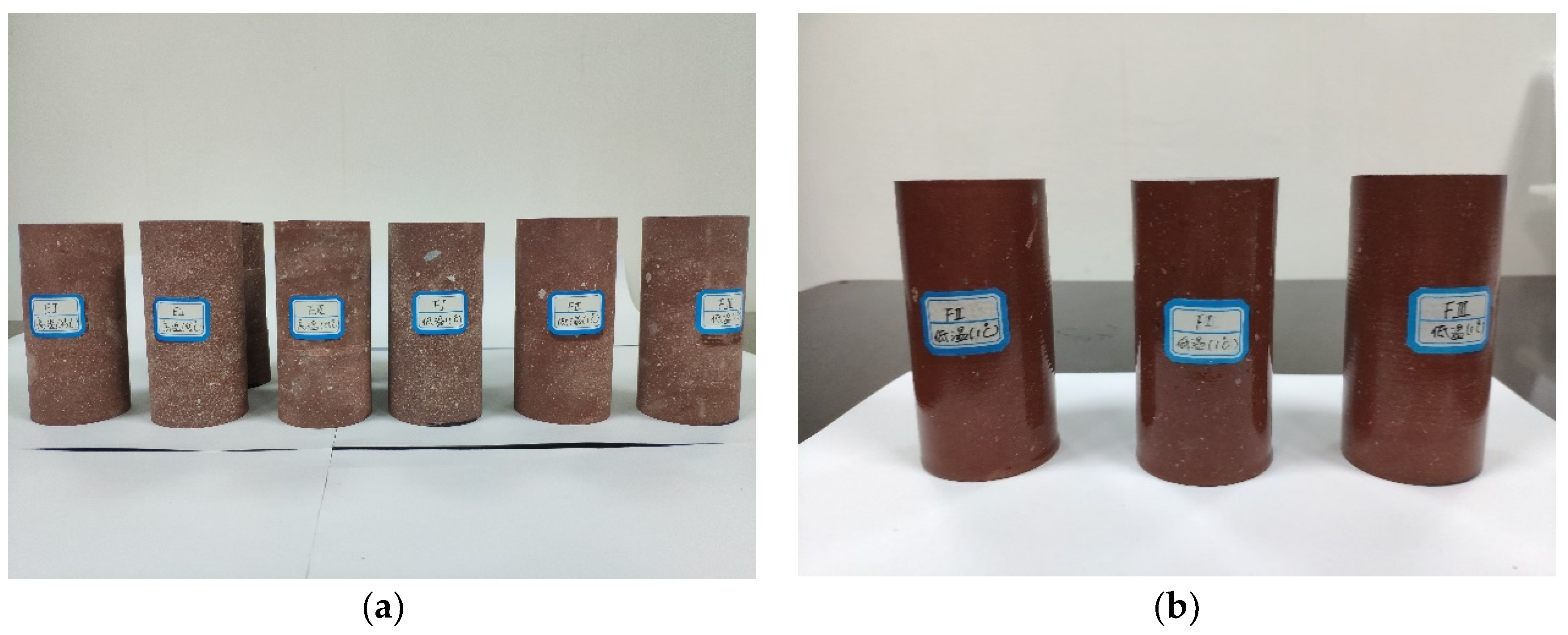

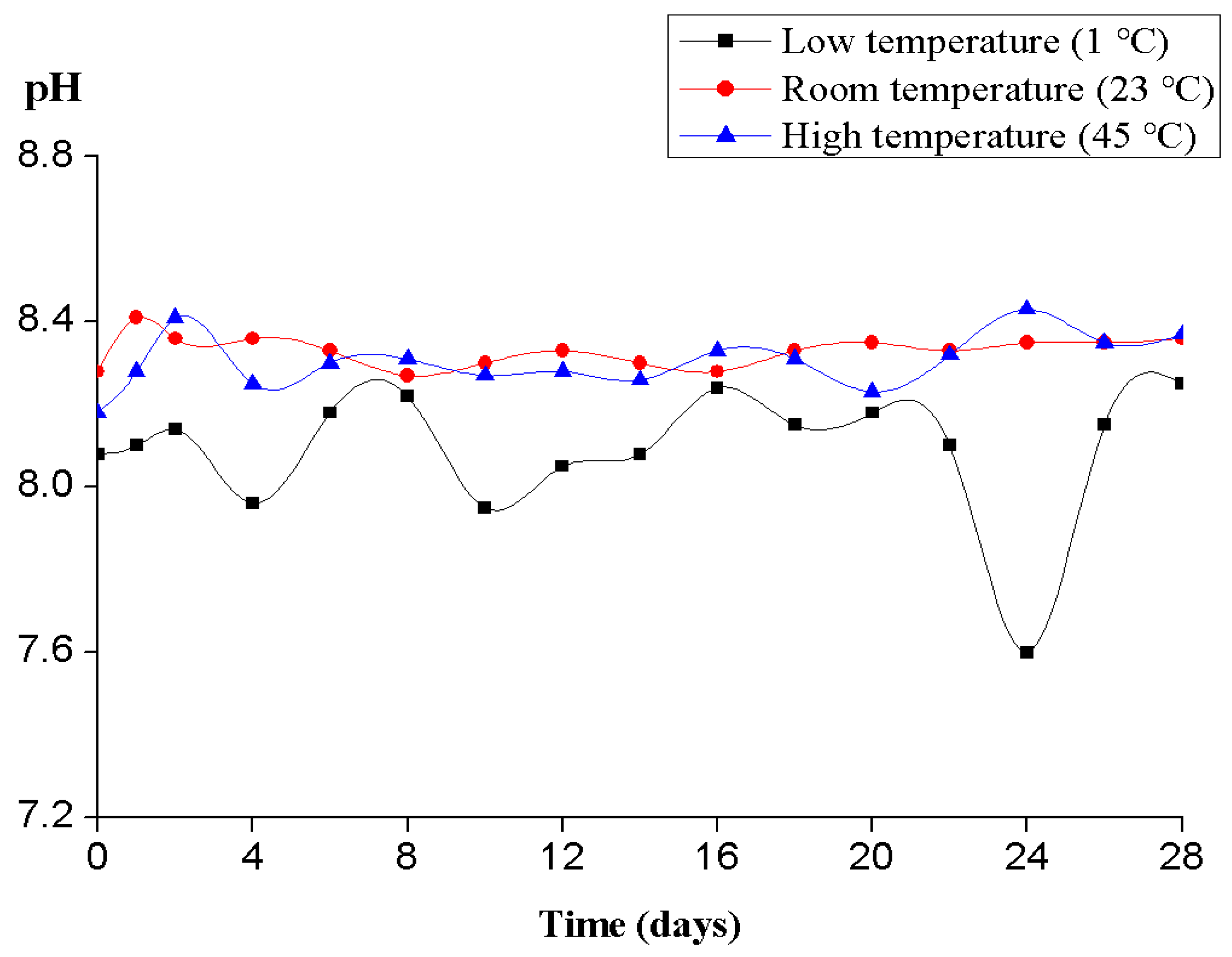
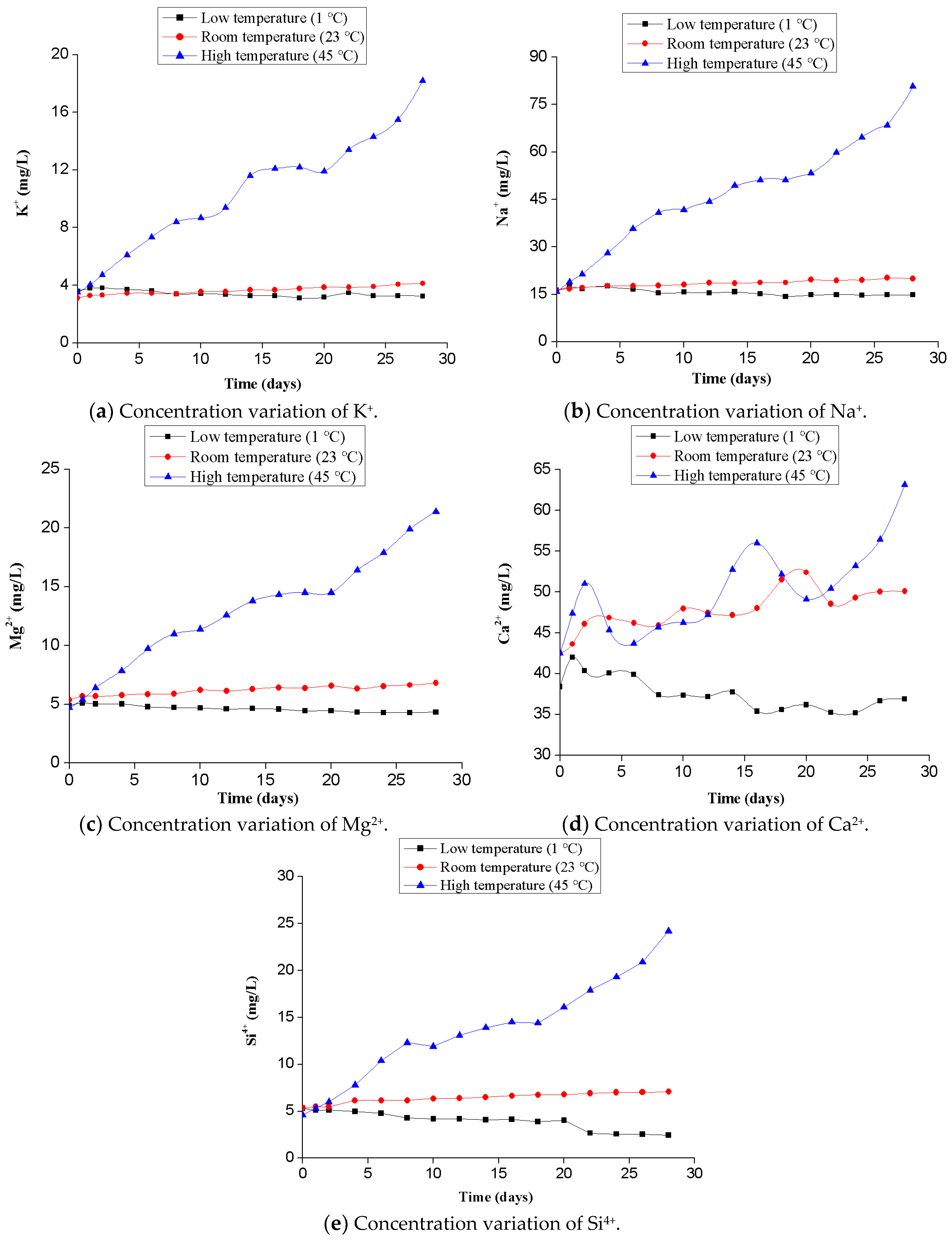
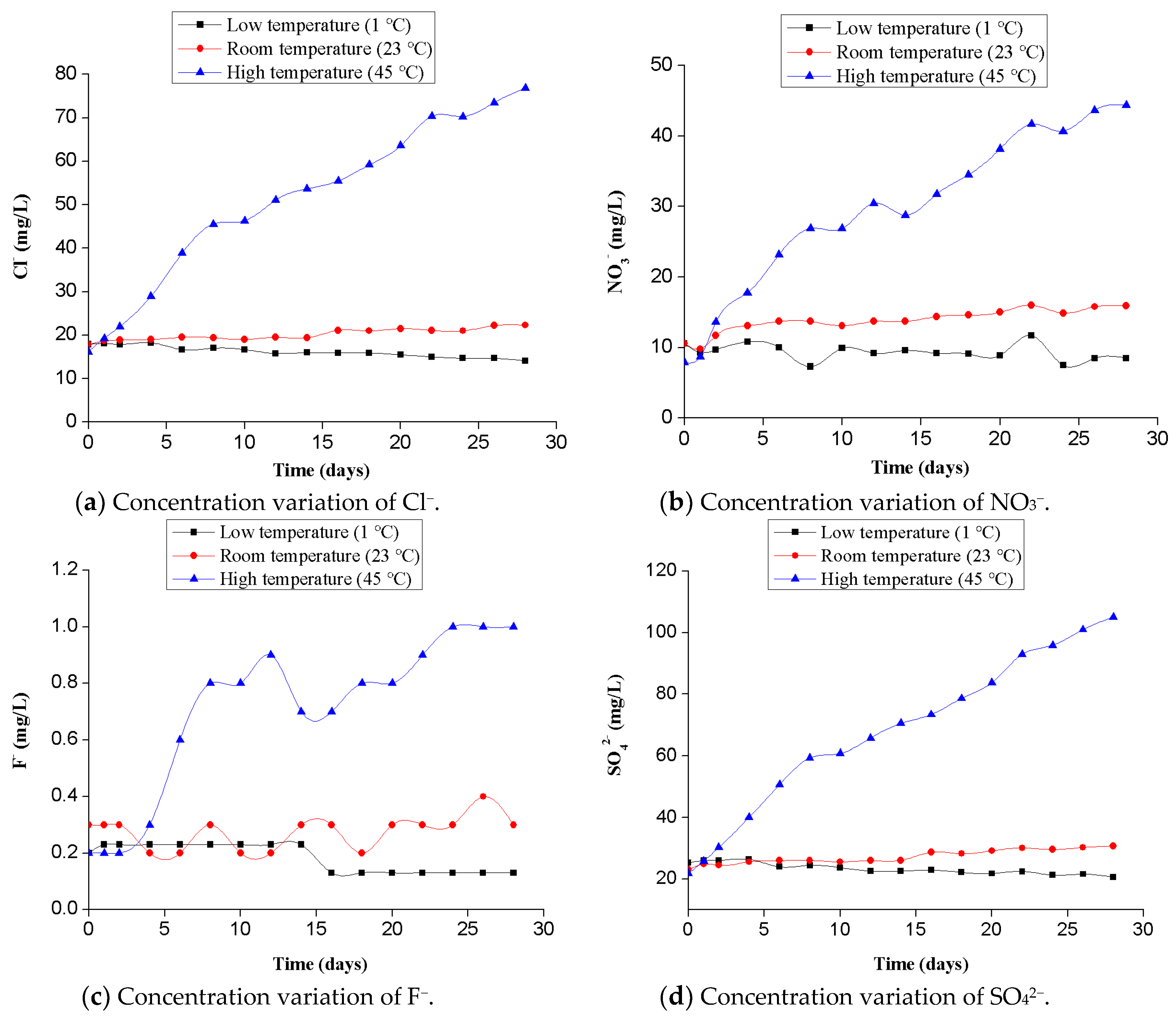

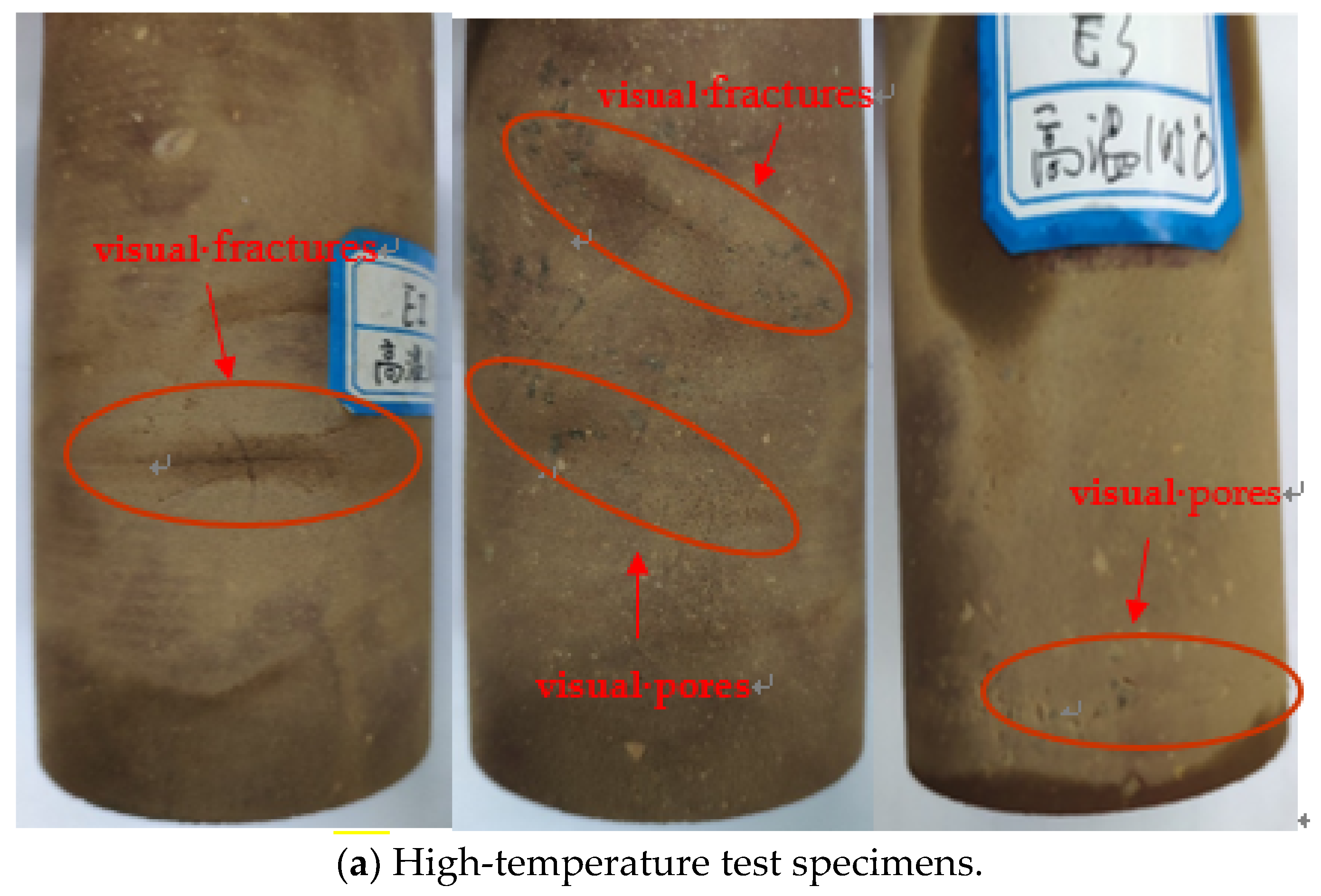
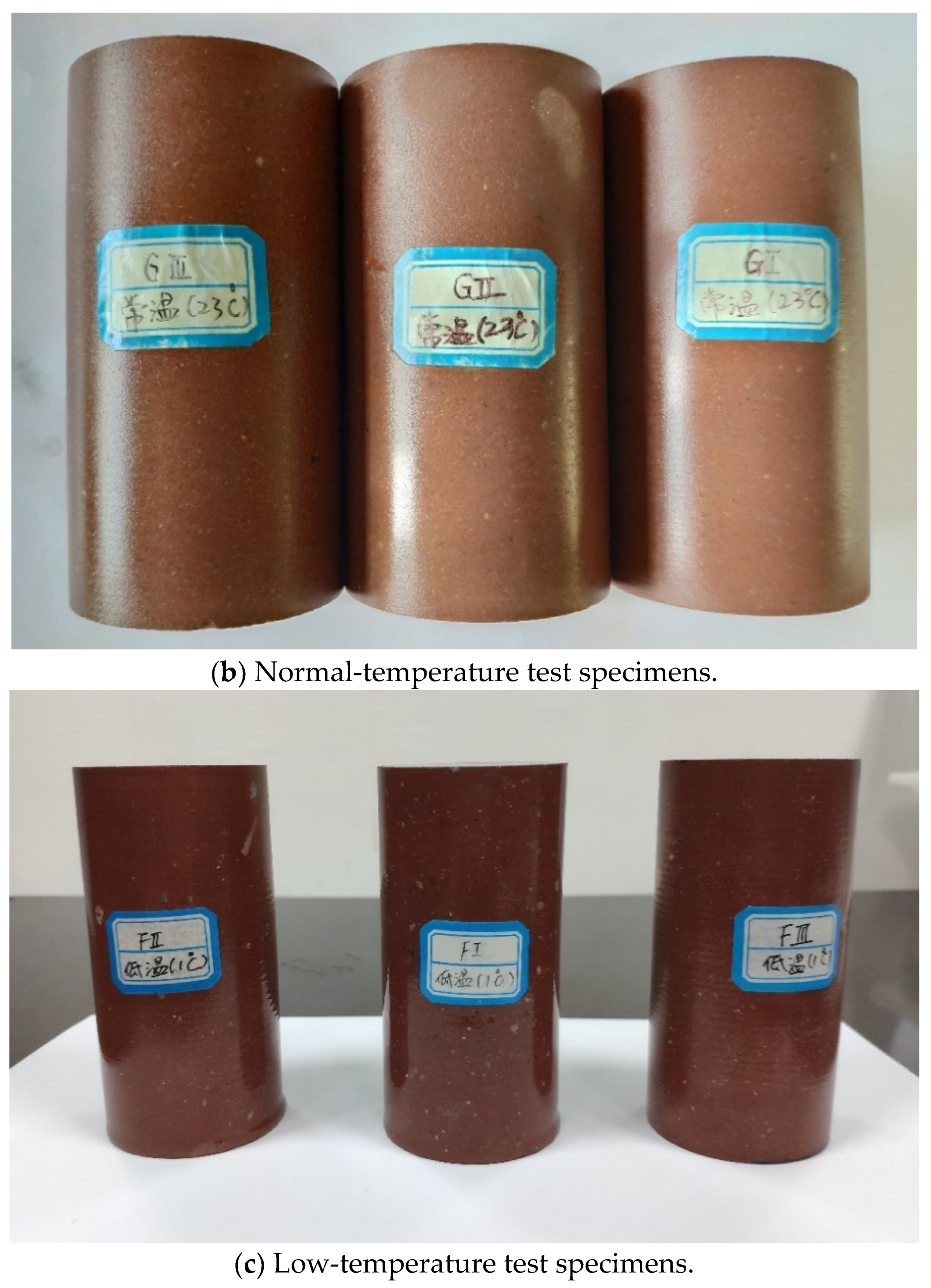
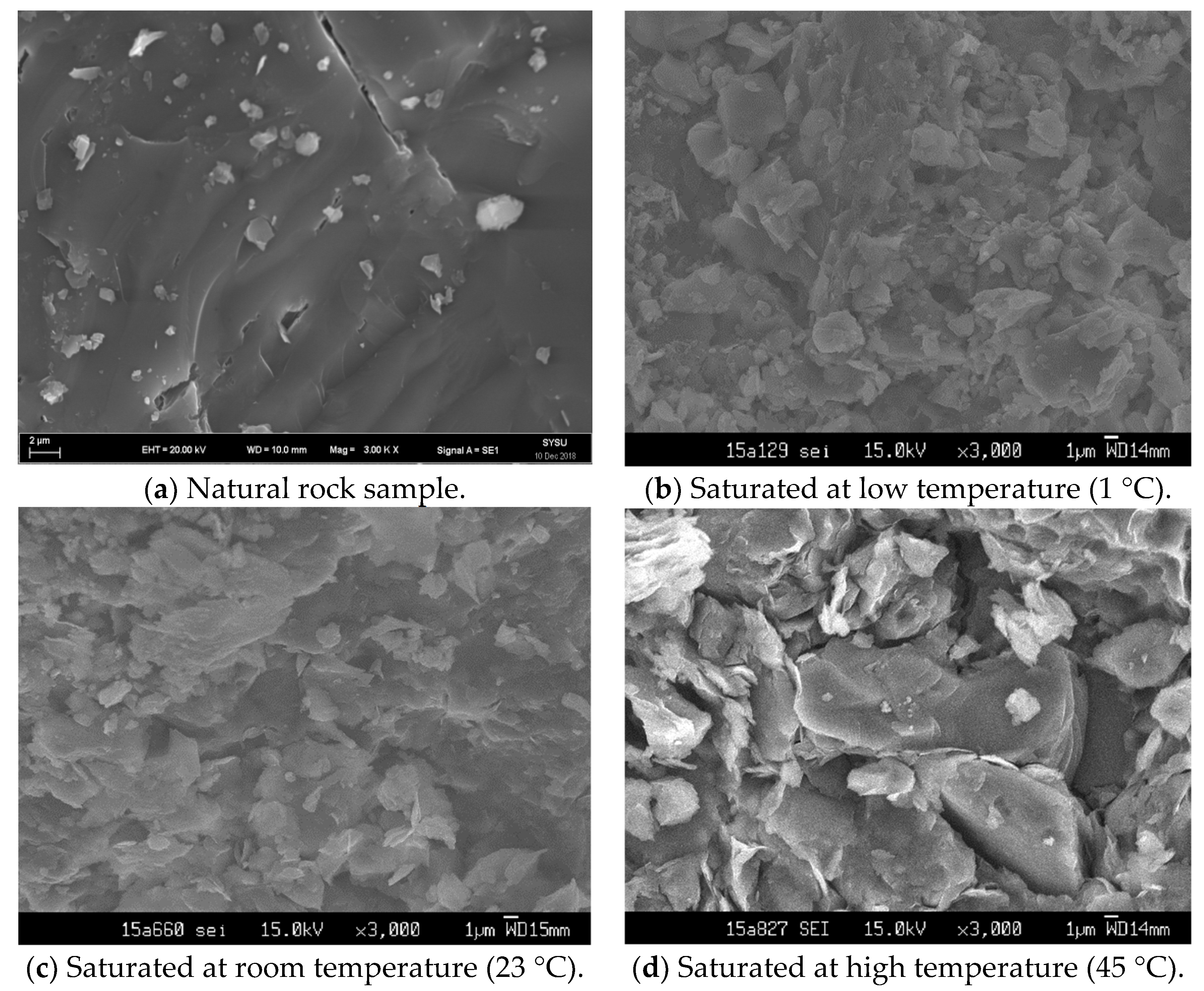

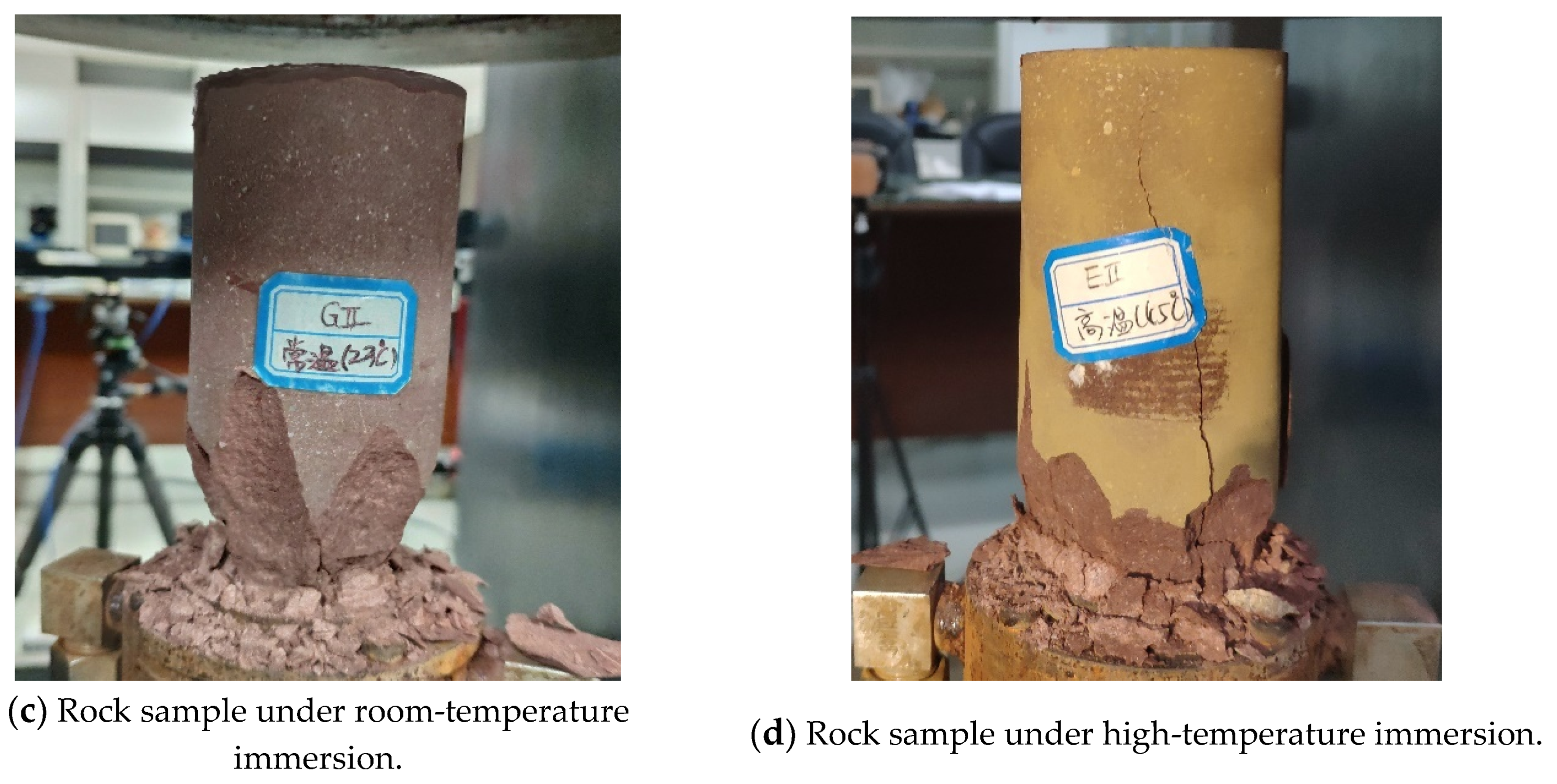
| Rock Name | Water Content (%) | Dry Density (g/cm3) | Density (g/cm3) | Specific Gravity | Water Absorption (%) | Porosity (%) |
|---|---|---|---|---|---|---|
| Red-bed sandstone | 0.45–0.5 | 2.46–2.57 | 2.47–2.58 | 2.68–2.72 | 0.8–1.5 | 10–10.8 |
| Number | Category | Porosity/n |
|---|---|---|
| 1 | Dry | 0.58% |
| 2 | Low temperature | 14.00% |
| 3 | Medium temperature | 24.04% |
| 4 | High temperature | 26.58% |
| Number | Uniaxial Compressive Strength (MPa) | |||||
|---|---|---|---|---|---|---|
| Condition | Ⅰ | Ⅱ | Ⅲ | Average Value | Softening Coefficient | |
| Dry | 40.83 | 50.94 | 50.91 | 47.56 | 1 | |
| Low temperature | 28.54 | 31.43 | 30.84 | 30.27 | 0.64 | |
| Medium temperature | 23.09 | 27.46 | 25.98 | 25.51 | 0.54 | |
| High temperature | 16.01 | 14.11 | 15.51 | 15.21 | 0.32 | |
© 2019 by the authors. Licensee MDPI, Basel, Switzerland. This article is an open access article distributed under the terms and conditions of the Creative Commons Attribution (CC BY) license (http://creativecommons.org/licenses/by/4.0/).
Share and Cite
Liu, Z.; He, X.; Cui, G.; Zhou, C. Effects of Different Temperatures on the Softening of Red-Bed Sandstone in Turbulent Flow. J. Mar. Sci. Eng. 2019, 7, 355. https://doi.org/10.3390/jmse7100355
Liu Z, He X, Cui G, Zhou C. Effects of Different Temperatures on the Softening of Red-Bed Sandstone in Turbulent Flow. Journal of Marine Science and Engineering. 2019; 7(10):355. https://doi.org/10.3390/jmse7100355
Chicago/Turabian StyleLiu, Zhen, Xinfu He, Guangjun Cui, and Cuiying Zhou. 2019. "Effects of Different Temperatures on the Softening of Red-Bed Sandstone in Turbulent Flow" Journal of Marine Science and Engineering 7, no. 10: 355. https://doi.org/10.3390/jmse7100355





